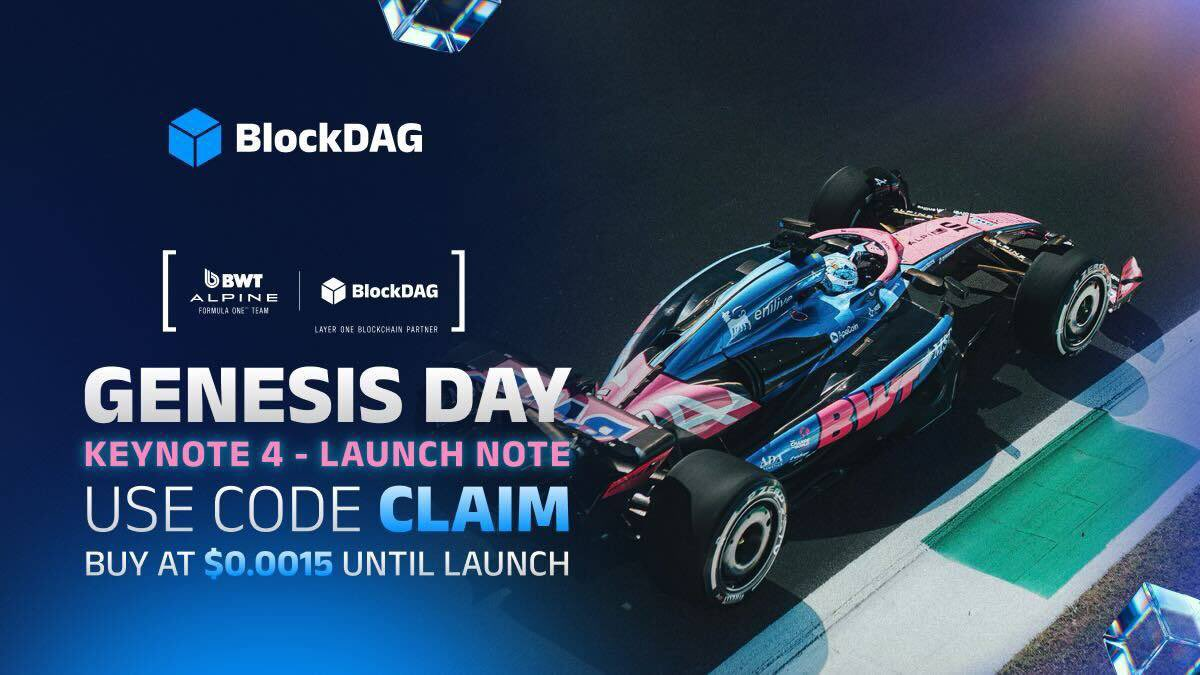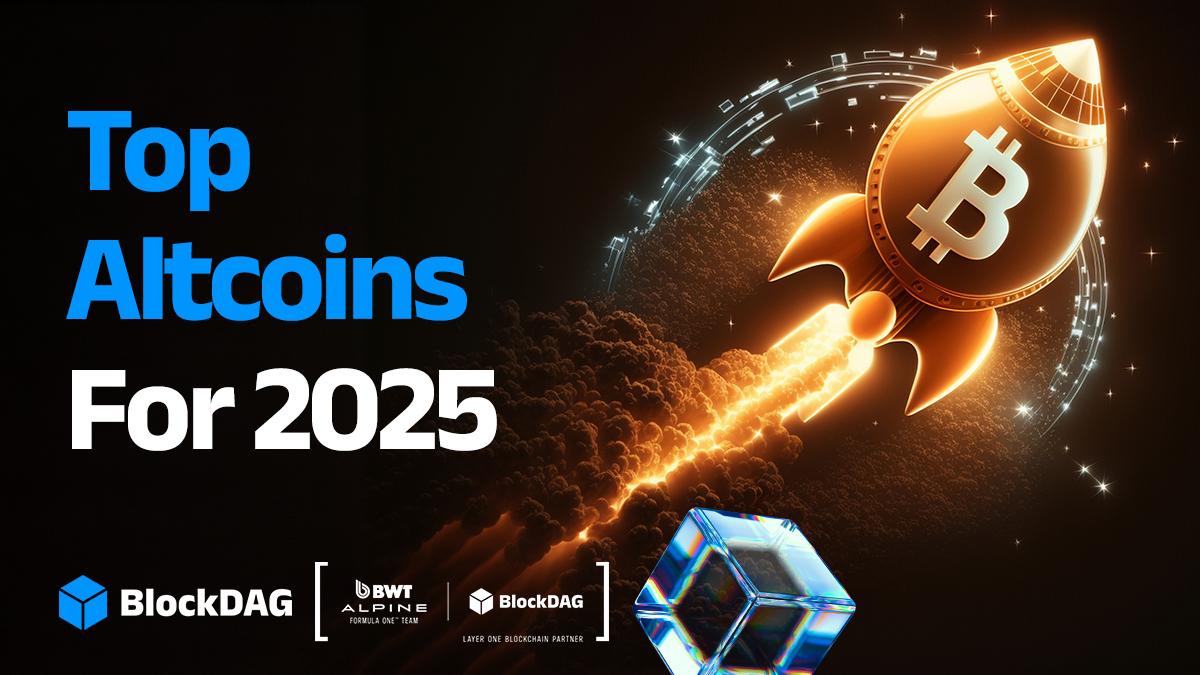In a market evolving beyond hype, investors are re-evaluating what defines the best crypto to invest in. From foundational giants like Ethereum and Cardano to infrastructure-driven networks like Tron, the conversation now includes newer contenders such as Blazpay and BlockDAG, each bringing unique strengths to the table.
Whether it’s DeFi innovation, settlement efficiency, long-term governance, or visibility through mainstream partnerships, these five projects are leading the current wave of crypto relevance. This list explores why each of them deserves a spot on your radar in 2025.
1. BlockDAG: The Final Entry Before Network Ignition
BlockDAG has transitioned from a bold concept to a fully mobilised blockchain initiative with time-sensitive entry mechanics. GENESIS Day and KEYNOTE 4 aren’t just promotional banners; they’re structural shifts. With over 27 billion BDAG sold, $420 million raised, and a 2900% return since Batch 1, BlockDAG is definitely the best crypto to buy now.
Yet, the $0.0015 claim price remains locked for those using the code “CLAIM”, a discount window against the current Batch 31 price of $0.0304. Its official alignment with the BWT Alpine Formula 1® Team catapults BlockDAG into global visibility, connecting blockchain with one of the fastest sports on Earth.
This isn’t just hype. It’s layered with deliverables: mining hardware is shipping, Testnet is live, and the EVM compatibility enables early dApp development. GENESIS isn’t coming, it’s happening. Only a few claim spots remain, making BlockDAG the most urgent entry point on this list.
2. Blazpay: Gamified AI Meets DeFi Rewards
Blazpay is one of the most talked-about presale tokens of 2025. With a focus on AI-enhanced DeFi, cross-chain liquidity, and gamified user rewards, it offers a hybrid solution designed to serve both investors and everyday users. Early-stage traction has pushed it into several analyst lists as one of the best cryptos to buy this year.
Its platform promises tools that leverage machine learning for yield optimisation, while integrating gaming layers to reward consistent participation. Blazpay’s real edge is accessibility; it aims to lower entry barriers by merging intuitive interfaces with powerful DeFi engines. While still early in its lifecycle, the foundational tokenomics and development roadmap are pushing investors to act before institutional interest sets in.
3. Ethereum: Staking, Stability, and the Institutional Base Layer
Ethereum continues to anchor the ecosystem. Despite short-term price fluctuations, it remains the primary settlement and smart contract layer, with strong ETF interest fueling long-term optimism. The ongoing integration of staking, supported by institutional custodians, adds yield stability that reinforces ETH’s value proposition.
Ethereum also plays a quiet but powerful role in the presale ecosystem: many of the best crypto to buy now are ERC-20 based, riding on Ethereum’s credibility and liquidity networks. With EVM compatibility as the default development standard, Ethereum’s relevance isn’t up for debate. It holds ground not because of hype, but because it remains the go-to platform for developers and investors alike.
4. Tron: The Backbone for Low-Fee Presale Settlements
Tron continues to fly under the radar while processing billions in stablecoin transactions. For many presale projects, particularly those targeting users in regions with limited access to Ethereum or Solana, Tron offers a vital infrastructure option. Its low gas fees, high throughput, and dominance in USDT settlement flows make it an appealing backend for new tokens looking to enable low-cost transactions.
Although TRX isn’t generating headlines daily, it’s solidifying its presence as a utility-first chain. Presale teams increasingly cite Tron as the chain of choice when rapid adoption and cost-efficient distribution are critical. It may not have the brand glamour of Ethereum, but Tron’s performance metrics speak louder than its marketing.
5. Cardano: Playing the Long Game on Governance and Stability
Cardano’s approach remains deliberate and calculated. Rather than chasing hype cycles, ADA continues to evolve its governance structures and protocol layers through peer-reviewed updates. While some investors grow impatient with its slower pace, others see Cardano as one of the few ecosystems building with long-term resilience in mind. Recent DAO integrations and sidechain updates point to an expanding framework that could reward those willing to wait.

ADA still holds a top-10 market cap position, and its staking model offers reliable returns for those parked in long-term strategies. For investors prioritising structural soundness and community governance, Cardano maintains its place in 2025’s best crypto to buy now, even if it’s not delivering flash-in-the-pan returns.
Final Words
The clearest signal of crypto’s maturing cycle is the shift from speculation to infrastructure. BlockDAG exemplifies this transition, with its GENESIS Day and KEYNOTE 4 launch note serving as the final call for entry before public ignition. Blazpay offers a DeFi-meets-gaming model that’s drawing early investor attention, while Ethereum, Tron, and Cardano remain foundational to everything from presale execution to protocol innovation. But the real differentiator is access.
While Ethereum and Cardano solidify legacy positions, and Tron powers silent growth, BlockDAG’s $0.0015 entry window, backed by $420 million in proof, sets it apart. For anyone looking at the best crypto to buy before the next cycle flips, this is the shortlist, and the countdown has already started.

Disclaimer: This media platform provides the content of this article on an "as-is" basis, without any warranties or representations of any kind, express or implied. We assume no responsibility for any inaccuracies, errors, or omissions. We do not assume any responsibility or liability for the accuracy, content, images, videos, licenses, completeness, legality, or reliability of the information presented herein. Any concerns, complaints, or copyright issues related to this article should be directed to the content provider mentioned above.






